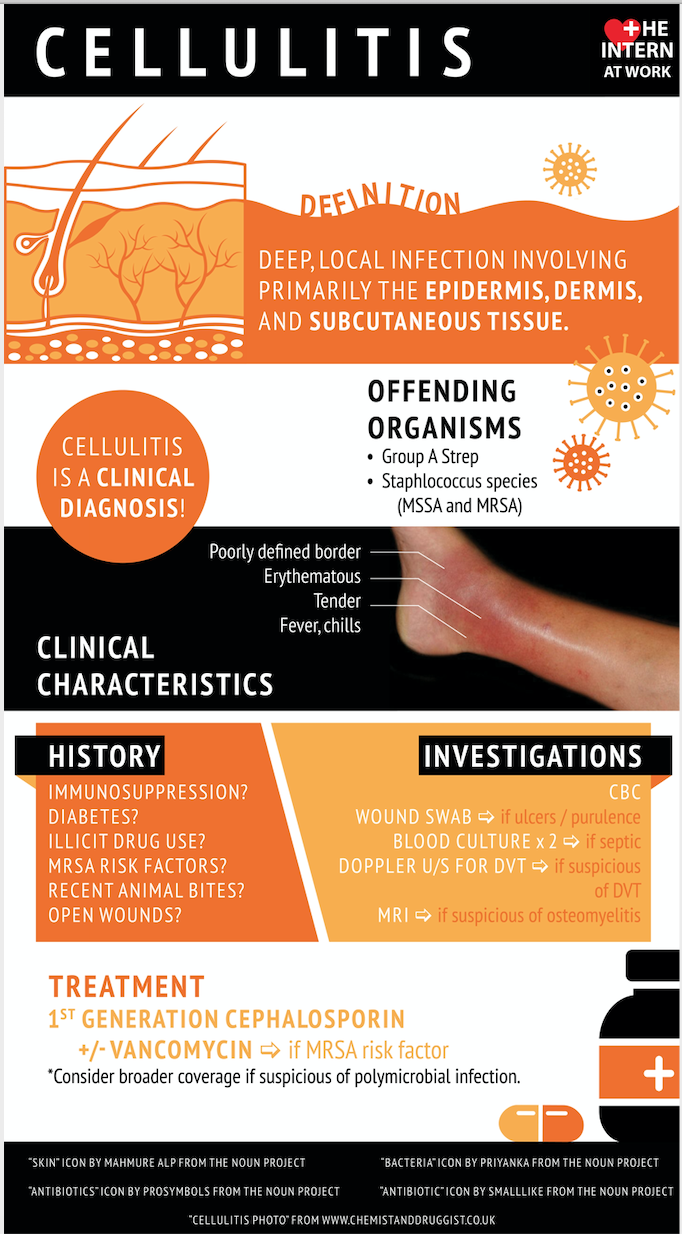Day 3 - Cellulitis
Erysipelas
Well-defined, raised, demarcated area of erythema
Superficial Infection
Common organism: Group A Strep
Cellulitis
Poorly defined, deeper, infection
Common organism: Streptococcus, Staphylococcus
Empiric Treatment
Cefazolin 1-2g IV q8h
Vancomycin 15-20mg IV x 1 loading dose, then 1g IV BID for those with MRSA positive swab
Duration of Treatment
7 days tends to be enough for treatment with a maximum length of 10 days. Patients may still have erythema or swelling despite appropriate treatment. This should be treated with supportive care and not further antibiotic therapy.
Frequently asked questions:
My patient’s cellulitis appears worse than before despite appropriate antibiotic therapy
Cellulitis tends to worsen prior to improving! Patience is key - stick to appropriate antibiotic therapy.
What about patients who have recurrent cellulitis due to venous stasis?
Venous stasis should first be treated with supportive care first - including leg elevation, compression stockings, diuresis when appropriate and discontinuation of offending medications if possible. If patients continues to have 3-4 episodes/year despite appropriate management, there is weak evidence to support suppressive antibiotics with low dose penicillin or erythromycin. (IDSA guidelines)
My patient is getting more septic despite treatment of his cellulitis!
Cellulitis is an uncommon cause for sepsis and other sources of infection should be considered.
How do I know it is not necrotizing fasciitis?
Necrotizing fasciitis is a clinical diagnosis. Imaging demonstrating subcutaneous air, crepitus on exam, elevation in CK may suggest signs of necrotizing fasciitis. If there is ongoing concern, consultation with the appropriate surgical service should be considered.

